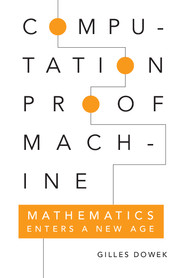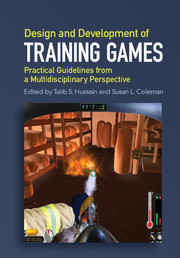Refine search
Actions for selected content:
48172 results in Computer Science
5 - Church's Thesis
- from PART TWO - The Age of Reason
-
- Book:
- Computation, Proof, Machine
- Published online:
- 05 May 2015
- Print publication:
- 05 May 2015, pp 55-68
-
- Chapter
- Export citation
Conclusion: As We Near the End of This Mathematical Voyage …
-
- Book:
- Computation, Proof, Machine
- Published online:
- 05 May 2015
- Print publication:
- 05 May 2015, pp 136-138
-
- Chapter
- Export citation
12 - News from the Field
- from Part Three - Crisis of the Axiomatic Method
-
- Book:
- Computation, Proof, Machine
- Published online:
- 05 May 2015
- Print publication:
- 05 May 2015, pp 111-123
-
- Chapter
- Export citation
9 - Intuitionistic Type Theory
- from Part Three - Crisis of the Axiomatic Method
-
- Book:
- Computation, Proof, Machine
- Published online:
- 05 May 2015
- Print publication:
- 05 May 2015, pp 89-95
-
- Chapter
- Export citation
14 - The End of Axioms?
- from Part Three - Crisis of the Axiomatic Method
-
- Book:
- Computation, Proof, Machine
- Published online:
- 05 May 2015
- Print publication:
- 05 May 2015, pp 134-135
-
- Chapter
- Export citation
Contents
-
- Book:
- Computation, Proof, Machine
- Published online:
- 05 May 2015
- Print publication:
- 05 May 2015, pp vii-viii
-
- Chapter
- Export citation
Dedication
-
- Book:
- Computation, Proof, Machine
- Published online:
- 05 May 2015
- Print publication:
- 05 May 2015, pp v-vi
-
- Chapter
- Export citation
Frontmatter
-
- Book:
- Twitter: A Digital Socioscope
- Published online:
- 05 May 2015
- Print publication:
- 05 May 2015, pp i-iv
-
- Chapter
- Export citation
8 - Constructive Proofs and Algorithms
- from PART TWO - The Age of Reason
-
- Book:
- Computation, Proof, Machine
- Published online:
- 05 May 2015
- Print publication:
- 05 May 2015, pp 82-86
-
- Chapter
- Export citation
4 - Hyperlocal Happiness from Tweets
-
-
- Book:
- Twitter: A Digital Socioscope
- Published online:
- 05 May 2015
- Print publication:
- 05 May 2015, pp 96-110
-
- Chapter
- Export citation
6 - Disaster Monitoring
-
-
- Book:
- Twitter: A Digital Socioscope
- Published online:
- 05 May 2015
- Print publication:
- 05 May 2015, pp 131-160
-
- Chapter
- Export citation
1 - Analyzing Twitter Data
-
-
- Book:
- Twitter: A Digital Socioscope
- Published online:
- 05 May 2015
- Print publication:
- 05 May 2015, pp 21-51
-
- Chapter
- Export citation
1 - The Prehistory of Mathematics and the Greek Resolution
- from PART ONE - Ancient Origins
-
- Book:
- Computation, Proof, Machine
- Published online:
- 05 May 2015
- Print publication:
- 05 May 2015, pp 5-14
-
- Chapter
- Export citation

Computation, Proof, Machine
- Mathematics Enters a New Age
-
- Published online:
- 05 May 2015
- Print publication:
- 05 May 2015

Design and Development of Training Games
- Practical Guidelines from a Multidisciplinary Perspective
-
- Published online:
- 05 May 2015
- Print publication:
- 10 November 2014
Preface
-
- Book:
- Twitter: A Digital Socioscope
- Published online:
- 05 May 2015
- Print publication:
- 05 May 2015, pp ix-x
-
- Chapter
- Export citation
11 - Proof Checking
- from Part Three - Crisis of the Axiomatic Method
-
- Book:
- Computation, Proof, Machine
- Published online:
- 05 May 2015
- Print publication:
- 05 May 2015, pp 105-110
-
- Chapter
- Export citation
4 - From the Decision Problem to Church's Theorem
- from PART TWO - The Age of Reason
-
- Book:
- Computation, Proof, Machine
- Published online:
- 05 May 2015
- Print publication:
- 05 May 2015, pp 44-54
-
- Chapter
- Export citation
Index
-
- Book:
- Twitter: A Digital Socioscope
- Published online:
- 05 May 2015
- Print publication:
- 05 May 2015, pp 161-173
-
- Chapter
- Export citation
Contents
-
- Book:
- Twitter: A Digital Socioscope
- Published online:
- 05 May 2015
- Print publication:
- 05 May 2015, pp v-vi
-
- Chapter
- Export citation
